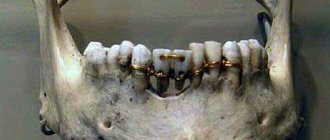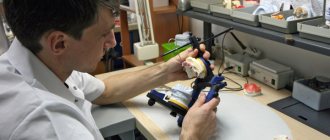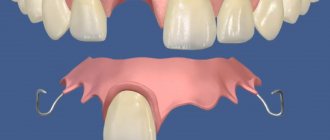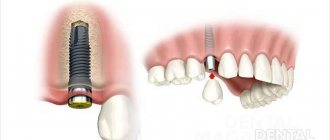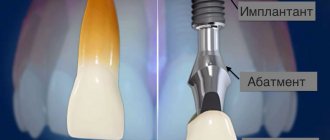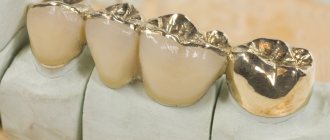Ksenia Kotova editor of Dental Magazine
Since prehistoric times, people have been concerned about the problem of diseased teeth. Infections, lack of oral hygiene, and switching to grain-based foods led to tooth loss even at a young age. Archaeological finds confirm that this was a total problem. Sometimes infection and tooth loss resulted in death.
Losing teeth at any age is a problem for the whole body. Due to the inability to chew food normally, diseases of the gastrointestinal tract arise, which lead to other problems. Therefore, people have always sought to make up for this loss - in the name of beauty and health. The materials used in the manufacture of artificial teeth were of natural origin (wood, pebbles, shells, animal bones). And only at the end of the 19th - beginning of the 20th centuries, during the development of science and industry, technologies appeared that made it possible to use dental implants for the first time. And in the 21st century, with the advent of new technologies and materials, this problem was completely solved.
The use of implants in ancient times
Replacing teeth with improvised materials in one form or another has been used by people since ancient times. While studying ancient Egyptian mummies, a discovery was made that clarified the situation about the methods of treating dental diseases of that time. It turned out that the ancient Egyptians used gold wire to fasten lost teeth. The fallen tooth was ground down, the root was removed and it was fastened to healthy teeth. To strengthen the structure, three nearby teeth were captured. Gold, as is known, does not oxidize. It is still used for prosthetics today. The ancient Egyptians first described tooth decay as a disease.
The ancient Etruscans, who lived 500 years before the rise of the Roman Empire, used not only human but also animal teeth as implants. And the cavities in the teeth were filled with gold plates, and prosthetics were created from animal bones. They, just like the ancient Egyptians, used gold wire to fasten teeth. The first ivory implants, which were very similar in color to human teeth and held together with gold wire, appeared in the East around 300 AD. e.
Rice. 1. Etruscan implants.
During archaeological excavations at the site of the Mayan tribe, a lower jaw with implanted shell teeth was discovered. The age of these implants is about 1500 years. These teeth, surgically inserted into the jawbone, took well, as X-rays showed bone around them similar to that found around modern implants.
Rice. 2. Mayan implants.
Beginning of the scientific approach to dental implantation
At the end of the 19th century, for the first time, Russian doctor N. N. Znamensky gave a report on dental implantation at one of the congresses of doctors. The scientist drew the attention of the medical community to the fact that:
- the implant must be installed in the bone, and not in the socket of the extracted tooth;
- bone tissue must be properly processed and prepared for the introduction of an artificial root;
- the implant must be made of a material that is biocompatible with body tissues.
The results of the scientist’s research attracted attention, but the doctor did not have time to pass on his notes to his heirs. Therefore, there was a break in the history of implantation that lasted until the mid-20th century.
The problem of dental implantation in the Middle Ages
During the Middle Ages, due to the lack of basic hygiene, the problem of dental disease was catastrophic. People were left without teeth at almost a young age. In the period from the 16th to the 19th centuries, the problem of lost teeth was solved in a unique way. In place of a lost tooth, teeth borrowed from the dead were inserted. Dr. John Hunter in the 18th century began a close study of the structure of the human jaw and teeth. He created an accurate description of the anatomy of the oral cavity using dissections of corpses secretly exhumed from graves. His merit lies in the fact that he was the first to conduct an experiment on implanting a tooth taken from another person. The result was successful - the tooth took root, and the blood vessels grew into the pulp chamber.
Abutment installation stage
At the stage of permanent prosthetics, the crown is placed not on the implant itself, but on its abutment, which is screwed into a titanium rod. The abutment is placed on the implant approximately two weeks after installation of the former; the abutment is selected individually for each clinical case. For example, if implantation was carried out in the area of the front teeth and the patient has thin gums, it is recommended to install zirconium abutments, since the use of conventional titanium products can have a bad effect on the aesthetics of the final result.
Installation of the abutment is the final stage of implantation, but the overall treatment does not end with this procedure, because a crown must be placed on the abutment.
Implantology of the 19th century
The rapid development of science and technology in the 19th century brought medicine of that time to a new level. In 1806, the first “mineral” tooth was invented, which became the basis for the development of modern implantology. The discovery was made by Dr. Fonzi. He developed a technique by which “mineral” teeth could be inserted in place of a missing tooth and secured with platinum hooks. This work was received with great enthusiasm by contemporaries, and for the first time in 1809, Dr. Magillo (Italy) implanted a tooth into a patient using a metal intraosseous implant.
Our prices
| Code no. | Name of procedures | Unit of measurement | Cost, rub. |
| 300 | Application anesthesia | 100,00 | |
| 301 | Infiltration anesthesia, conduction | 450,00 | |
| 638 | Installation of the INNO system implant (Korea) | 1 PC. | 32 000,00 |
| 639 | Placement of the gum former with gingival contour plastic surgery | 5 480,00 |
* The prices indicated on the website are not a public offer. The exact cost of treatment can only be determined at an appointment with a doctor.
Prices for treatment in Korolev full price list
Share on social media networks:
Article Expert:
Marinova Larisa Nikolaevna
Implantology, surgical dentistry. Dental implantation systems: Astratech, Biohorizons, Bicon, Implasa Hochst, Miss, Straumann. Sinus lifting (open and closed), bone grafting. Periodontology: frenuloplasty and vestibuloplasty, lingual frenuloplasty, recession plastic surgery, flap surgery.
Work experience 25 years
Implantology of the 20th century
At the beginning of the century, Dr. Greenfield became interested in implantology. He performed an operation on his patient, during which a semblance of a tooth made of an alloy of iridium and platinum with an artificial gold root was placed into the jaw. In the 1930s, the Stroke brothers experimented with screws made from a chromium-cobalt alloy. They were the first to produce pins as fastenings for artificial teeth. The Stroke brothers have received worldwide recognition for their work. They were the first to discover biocompatible materials for tooth replacement.
In the 40s of the twentieth century, Dr. Formingini and Dr. Zepponi, who are rightly called the fathers of implantology, developed a spiral stainless steel implant that fused perfectly with the bone.
Throughout the century, there has been an intense search for further ways to improve materials and techniques for dental implantation.
In the 50s, titanium's ability to osseointegrate was discovered. This paved the way for experiments in the implantation of titanium pins, which led to very successful results. In 1965, Dr. Brånemark placed the first titanium implant in a volunteer. This was a turning point in the development of implantology.
Rice. 3. Dental implants in the 60s and 70s.
Already in the 70s, implants acquired a modern look, but experiments with materials and shapes continued. Dr. Branemark successfully used titanium implants in his practice, which took root well and served patients for decades. Also innovators in implantology were Dr. Schroeder and Dr. Straumann. They conducted various experiments with new alloys in orthopedic surgery to use these methods in dental implantation.
Spreading the discovery around the world
When George Zarb, one of the most influential scientists in the development of artificial tooth root replacements (University of Toronto, Canada), learned about Brånemark's research, he immediately went to Gothenburg, where he spent six months convincing the professor to share the results of his research with the world. Zarb and his group were the first to conduct research outside Sweden in parallel with Brånemark. In order to accelerate the dissemination of the concept of osseointegration, a conference on osseointegration was held in 1982 in Toronto (Canada), on the basis of one of the dental clinics, with the support of the Universities of Toronto and Gothenburg. Zarb personally wrote an invitation to many famous researchers and scientists, urging them to study a new and original technique for restoring teeth. Most dentists attended the conference only because of Professor Zarb's invitation and later noted that they did not expect such a superiority of the new technology over all previous developments. Despite 15 years of clinical research, not only in Sweden, Brånemark was concerned whether the top dental society would accept his presentation; however, at the end of the conference, the scientist’s research was so highly appreciated that over the following years, many participants in this conference even became his employees. Since then, several world-renowned institutions have joined the team of developers and researchers of osseointegration in countries such as the United States, Canada, Australia, Belgium, Sweden, Spain, Italy, Brazil, Chile, Japan and Korea.
Based on materials from Chapter 1 of the book “At the Beginnings - Brånemark and the Development of Osseointegration” - McClarence, Elaine - Quintessence Books, Berlin, Germany, 2003.
Modernity
Dental implants gained real importance in the mid-70s. It took several more decades for modern implants to become reliable and durable. Researchers increasingly turned to dental implantology; eventually, for the manufacture of modern dentures, they began to use zirconium dioxide, which was close in properties to titanium. For the last decade, crowns have been made from this material, but work to improve the technology continues.
Rice. 4. Modern dental implant.
- Paraskevich V. L. Dental implantology: Fundamentals of theory and practice. Cacachi K. Handbook of dental implantology.
- Kutsevlyak V.I., Grechko N.B. et al. Dental implantology. Introductory course.
Stage of installation of the gum former
A gum former is a special device that helps create a beautiful soft tissue contour in the area where the implant is installed. The former is screwed onto the implant after the osseointegration process of the artificial rod is completed.
To place the former on the implant, the doctor will need to make an incision in the gum in the area of the installed plug. Having gained access to the plug, the implantologist will unscrew it and install the former in its place. The procedure for installing the former is quick, literally in half an hour, but since it involves an incision of soft tissue, the patient is given local anesthesia before performing all the necessary manipulations.
The gum contour will be formed in about two weeks, after which you can proceed to the next stages of treatment - installing an abutment and a crown on the implant.
Orthopedic stage
Implant crowns are placed approximately two weeks after the abutment is installed. Dentures are made according to individual impressions of the patient’s teeth, and crowns made of any materials can be placed on the implants. For prosthetics of front teeth, ceramic products are most often used; for the restoration of chewing units, prostheses made of zirconium, which have increased strength and can flawlessly withstand intense and constant loads, are used.
The price of the permanent prosthetics stage will depend on the type of prosthesis (not only crowns can be placed on implants), the material of its manufacture and technology.
Fig.5 Dental implantation.
